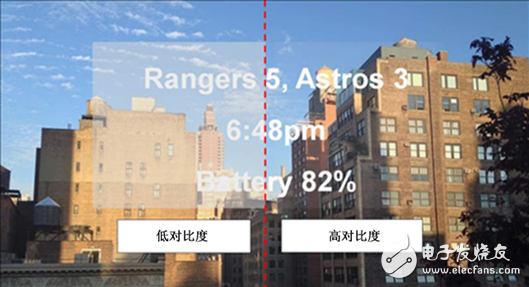Author: Mike Davis
One area of ​​interest in the growing field of wearable devices is the head-mounted display (HMD), also known as near-eye display (NED). Depending on the application, HMDs can be broadly classified into two categories, virtual reality (VR) and augmented reality (AR). Virtual reality creates an immersive environment for users. Compared to the human eye, the vision seen through virtual reality will be broader. Such technologies are often used in similar scenes such as games or private theaters. On the other hand, augmented reality can present information in the user's current field of view in the form of a perspective image, often from other sources, such as computers, smartphones or cloud databases connected via wireless. Information presented using AR technology can be projected to the periphery of the line of sight, and the user needs to occasionally shift the line of sight to obtain relevant information. For critical applications such as surgery, equipment repair and packaging, this information can be displayed directly in the center of the field of view.

Whether it is VR or AR, a virtual 2D or 3D image is formed by a light projection in a comfortable viewing distance, but these virtual images need to pass through the pupil of the person and focus on the retina. The eye then generates specific parameters and trade-offs based on the needs of the image transmission. If you want to learn more about parameters and trade-offs, you can download TI's near-eye display white paper. Or visit END to read the article titled "Inner Eye Display Design Internal Guide" for a general overview. For engineers who plan to use DLP technology to achieve similar applications, TI also offers an introduction to DLP® PicoTM technology. At the same time, the TI evaluation module has been released to help developers quickly use DLP technology. In addition, developers can work with TI's web design studio to package related technologies into suites for different applications.
So why choose DLP Pico technology to develop HMD applications? Perhaps users of HMD applications have the experience that they are sometimes disturbed by "gray frames" around the image, which is especially noticeable in perspective AR devices. The "gray box" that undermines the user experience is caused by the black level of the display background, that is, those areas where nothing is displayed. From a technical point of view, this situation is related to the inherent contrast of the display technology used. Compared to other similar technologies, TI's DLP technology has a high contrast ratio of 2000:1 full black total white contrast (FOFO), and it provides high transparency for AR display through advanced signal processing technology. Background. Another key advantage of DLP technology is high-speed data processing. In applications such as video games that use image tracking user actions, the resulting image delay is extremely low. The display delay is only 8.33 ms at an input frame rate of 120 hz. In addition, there are many applications on the market that can run on battery power, thanks to the low power consumption of DLP chipsets, proprietary algorithms, and efficient use of non-polar LED lighting.
Ceiling Fan Size,Indoor Ceiling Fan Size,Outdoor Ceiling Fan Sizes,Modern Ceiling Fan Size
Jiangmen MagicPower Electrical Appliances Co.,Ltd. , https://www.magicpowerfan.com
